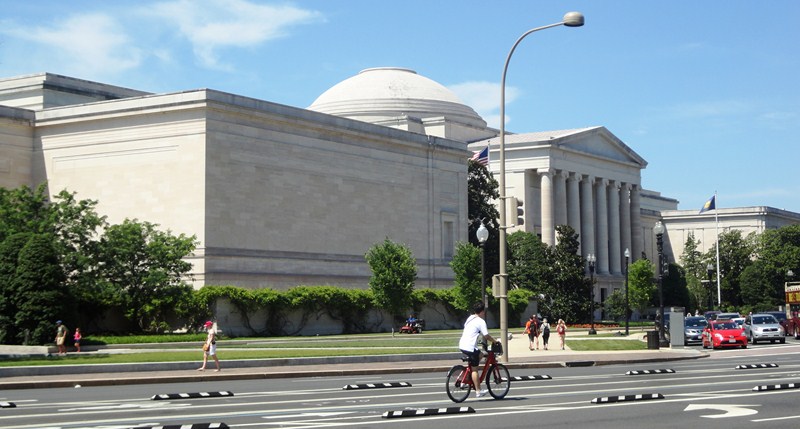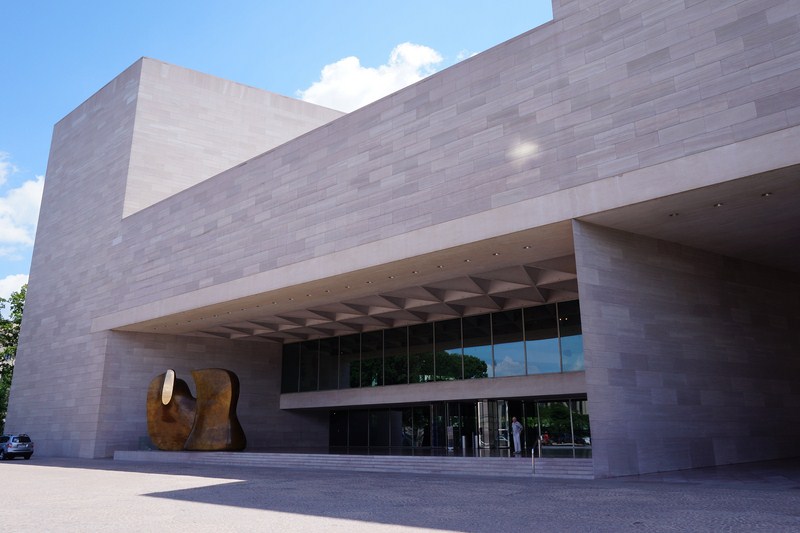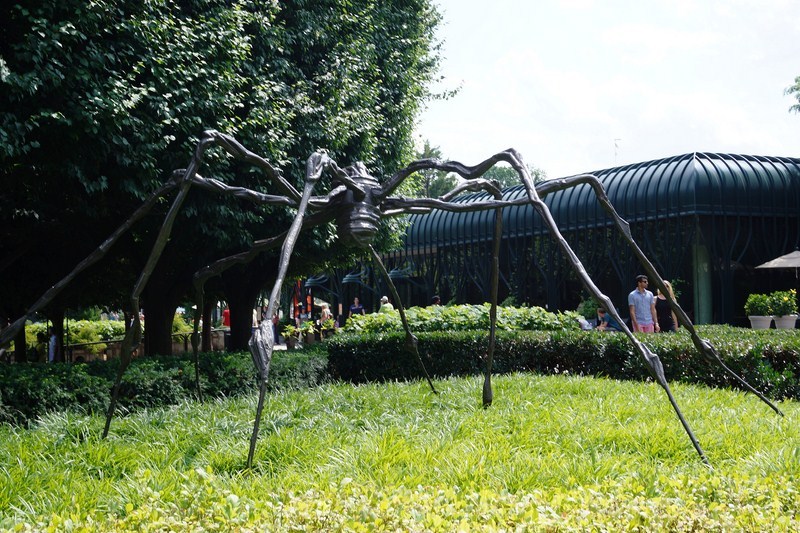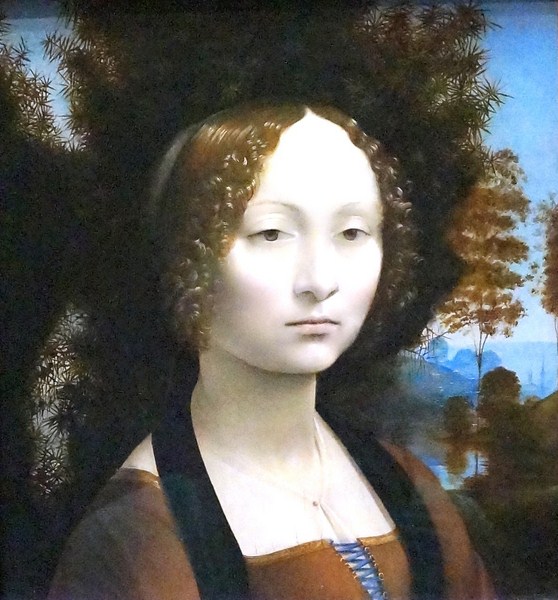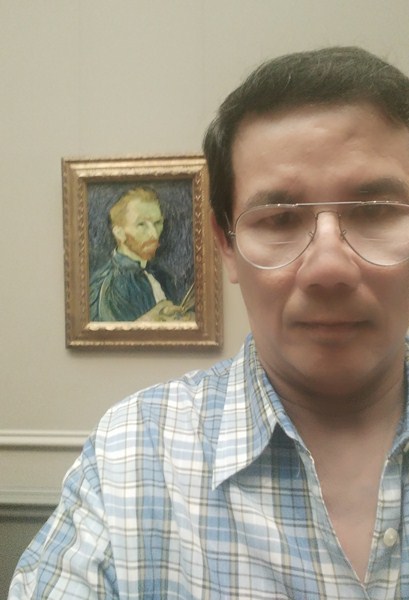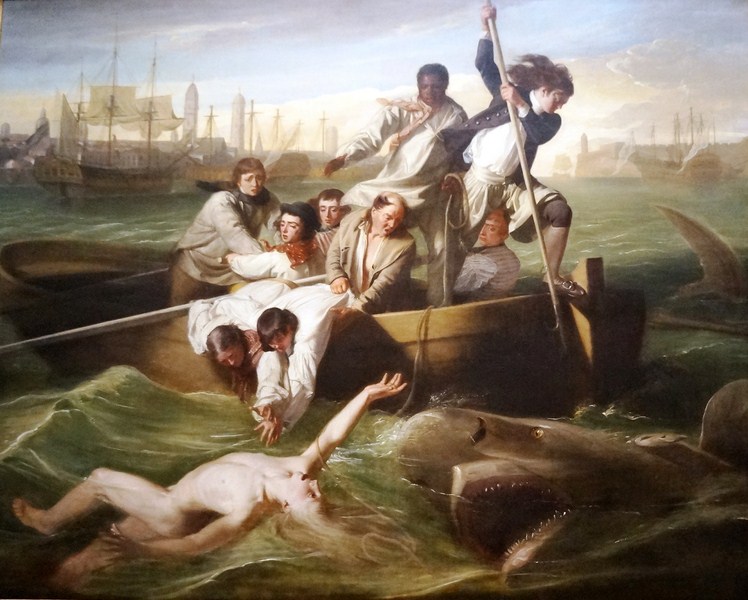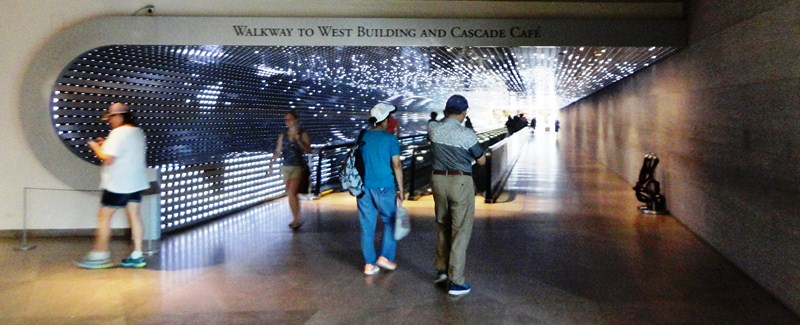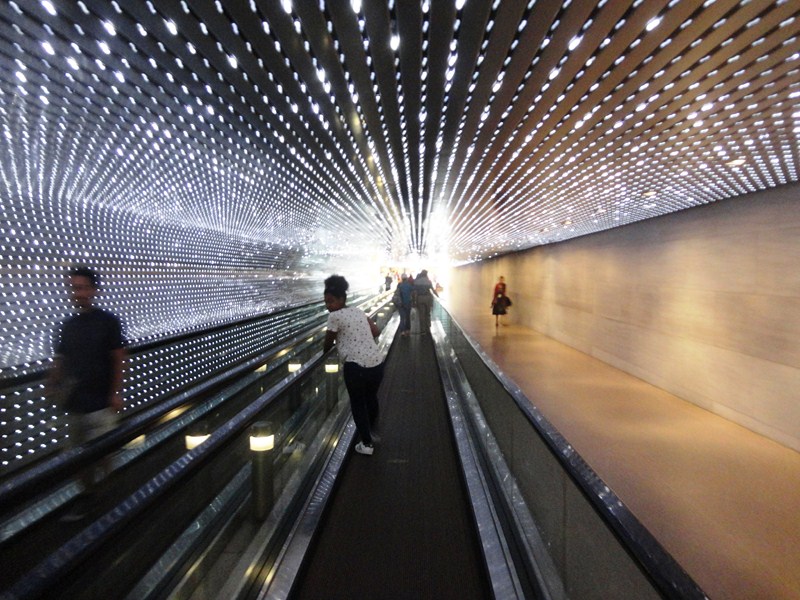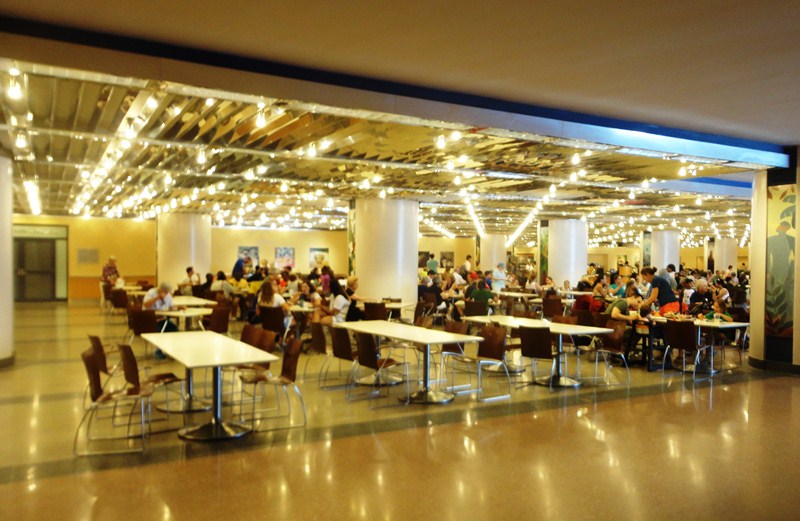The National Gallery of Art (NGA), and its attached 2.5-hectare (6.1-acre) Sculpture Garden, is located on the National Mall, between 3rd and 9th Streets, at Constitution Avenue NW. The NGA’s permanent collection of paintings, drawings, prints, photographs, sculpture, medals, and decorative arts traces the development of Western Art from the Middle Ages to the present.
Check out “National Gallery of Art – Sculpture Garden”
The substantial core collection includes major works of art donated founding benefactors Paul Mellon, Ailsa Mellon Bruce, Lessing J. Rosenwald, Samuel Henry Kress, Rush Harrison Kress, Peter Arrell Browne Widener, Joseph E. Widener, Chester Dale and Edgar William and Bernice Chrysler Garbisch. In total, the NGA has 271,000 sq. ft. of exhibition space.
Here are some interesting trivia regarding this museum:
- It is one of the largest museums in North America
- For the breadth, scope, and magnitude of its collections, the NGA widely considered to be one of the greatest museums in the United States of America, often ranking alongside the Metropolitan Museum of Art and Museum of Modern Art (New York City), the Art Institute of Chicago (Chicago, Illinois) and the Museum of Fine Arts, Boston (Boston, Massachusetts).
- Of the top three art museums in the United States by annual visitors, it is the only one that has no admission fee.
- It houses the Portrait of Ginevra de’ Benci, the only painting by Leonardo da Vinci in public view in the Americas, and the largest mobile created by Alexander Calder.
- In 2020, due to the COVID-19 pandemic, it attracted only 730,408 visitors, a drop of 82% from 2019.
- In 2020, it ranked twenty-first on the List of most visited art museums in the world.
Check out “National Gallery of Art – Sculpture Garden” and “Museum of Modern Art”
This national art museum includes the original Neo-Classical West Building (designed by John Russell Pope), which is linked underground to the modern East Building (designed by I. M. Pei). Often, the Gallery presents temporary special exhibitions spanning the world and the history of art.
Check out “National Gallery of Art – West Building” and “National Gallery of Art – East Building”
Here is the historical timeline of the museum:
- During World War I, Andrew W. Mellon, a Pittsburgh banker (and later Treasury Secretary from 1921 until 1932) began gathering a private collection of old master paintings and sculptures.
- During the late 1920s, Mellon decided to direct his collecting efforts towards the establishment of a new national gallery for the United States.
- In 1930, partly for tax reasons, Mellon formed the A. W. Mellon Educational and Charitable Trust, which was to be the legal owner of works intended for the gallery.
- In 1930–1931, as part of the Soviet sale of Hermitage paintings, the Trust made its first major acquisition – 21 paintings from the Hermitage Museum in St. Petersburg including such masterpieces as Raphael‘s Alba Madonna, Titian‘s Venus with a Mirror, and Jan van Eyck‘s Annunciation.
- In 1929 Mellon had initiated contact with Charles Greeley Abbot, the recently appointed Secretary of the Smithsonian Institution.
- In 1931, Mellon was appointed as a Commissioner of the Institution’s National Gallery of Art. When the director of the Gallery retired, Mellon asked Abbot not to appoint a successor, as he proposed to endow a new building with funds for expansion of the collections. However, Mellon’s trial for tax evasion, centering on the Trust and the Hermitage paintings, caused the plan to be modified.
- In 1935, Mellon announced in The Washington Star, his intention to establish a new gallery for old masters, separate from the Smithsonian. When asked by Abbot, he explained that the project was in the hands of the Trust and that its decisions were partly dependent on “the attitude of the Government towards the gift.”
- In January 1937, Mellon formally offered to create the new Gallery.
- On March 24, 1937, Mellon’s birthday, a joint resolution of the United States Congress accepted the substantial art collection and funds for construction of the building (provided through the Trust), and approved the construction of a museum for the American people on the National Mall. The new gallery, effectively self-governing (not controlled by the Smithsonian Institution), took the old name “National Gallery of Art” while the Smithsonian’s gallery would be renamed the “National Collection of Fine Arts” (now the Smithsonian American Art Museum).
- On May 23, 1999, the National Gallery of Art Sculpture Garden, the final addition to the complex, was completed and opened to the public.
- In 2011, an extensive refurbishment and renovation of the French galleries were undertaken. In one weekend, as part of the celebration of the reopening of this wing, organist Alexander Frey performed 4 sold-out recitals of music of France in the French Gallery.
- In 2013, the NGA purchased, from a private French collection Gerard van Honthorst‘s 1623 painting, 1.23 by 2.06-m. (4 by 6.8 ft.) The Concert, which had not been publicly viewed since 1795.
The Italian Renaissance collection includes two panels from Duccio‘s Maesta, the tondo of the Adoration of the Magi by Fra Angelico and Filippo Lippi, a Botticelli work on the same subject, Giorgione‘s Allendale Nativity, Giovanni Bellini‘s The Feast of the Gods, Portrait of Ginevra de’ Benci (the only painting by Leonardo da Vinci in the Americas) and groups of works by Titian and Raphael.
The collections include paintings by many European masters, including a version of Saint Martin and the Beggar, by El Greco, and works by Matthias Grünewald, Cranach the Elder, Rogier van der Weyden, Albrecht Dürer, Frans Hals, Rembrandt, Johannes Vermeer, Anton Kern, Francisco Goya, Jean Auguste Dominique Ingres, and Eugène Delacroix, among others. There are also later works from the likes of Vincent van Gogh, Pablo Picasso, Henri Matisse, Jackson Pollock, and Roy Lichtenstein.
The collection of sculpture and decorative arts includes such works as the Chalice of Abbot Suger of St-Denis and a collection of work by Auguste Rodin and Edgar Degas. Other highlights of the permanent collection include the second of the two original sets of Thomas Cole‘s series of paintings titled The Voyage of Life, (the first set is at the Munson-Williams-Proctor Arts Institute in Utica, New York) and the original version of Watson and the Shark by John Singleton Copley (two other versions are in the Museum of Fine Arts, Boston and the Detroit Institute of Arts).
The National Gallery of Art’s print collection began with 400 prints donated by five collectors in 1941. In 1942, Joseph E. Widener donated his entire collection of nearly 2,000 works and, in 1943, Lessing Rosenwald donated his collection of 8,000 old master and modern prints. Between 1943 and 1979, Rosenwald donated almost 14,000 more works. In 2008, Dave and Reba White Williams donated their collection of more than 5,200 American prints. Today, in addition to rare illustrated books, the collection comprises 75,000 prints including collections of works by Albrecht Dürer, Rembrandt, Giovanni Battista Piranesi, William Blake, Mary Cassatt, Edvard Munch, Jasper Johns, and Robert Rauschenberg.
A walkway beneath 4th Street, called “the Concourse,” connects the two buildings. In 2008, the Concourse was transformed into Multiverse, an artistic installation by American artist Leo Villareal. The largest and most complex light sculpture by Villareal, Multiverse featured approximately 41,000 computer-programmed LED nodes that run through channels along the entire 200-foot (61 m)-long space.
The concourse also includes a large auditorium for lectures, films, and other educational programs, a smaller auditorium, expansive gallery space, a food court (Cascade Café), bookstore (Concourse Bookstore) and a gift shop (Children’s Shop). Cascade Café serves an ever-changing selection of soups, salads, specialty entrées, burgers, signature sandwiches, and fresh pastries and desserts in a food-court environment.
National Gallery of Art: Constitution Ave. NW (between 3rd and 9th Streets), Washington, D.C.. Tel: (202) 737-4215. Website: www.nga.gov. Open Mondays to Saturdays, 10 AM – 5 PM, and Sundays, 11 AM to 6 PM. It is closed on December 25 and January 1. Admission is free.
How to Get There: The most convenient metro stops are Archives/Navy Memorial (Yellow and Green lines; 0.2 miles); Judiciary Square (Red line; 0.5 miles), and Smithsonian (Blue and Orange lines; 0.7 miles).

